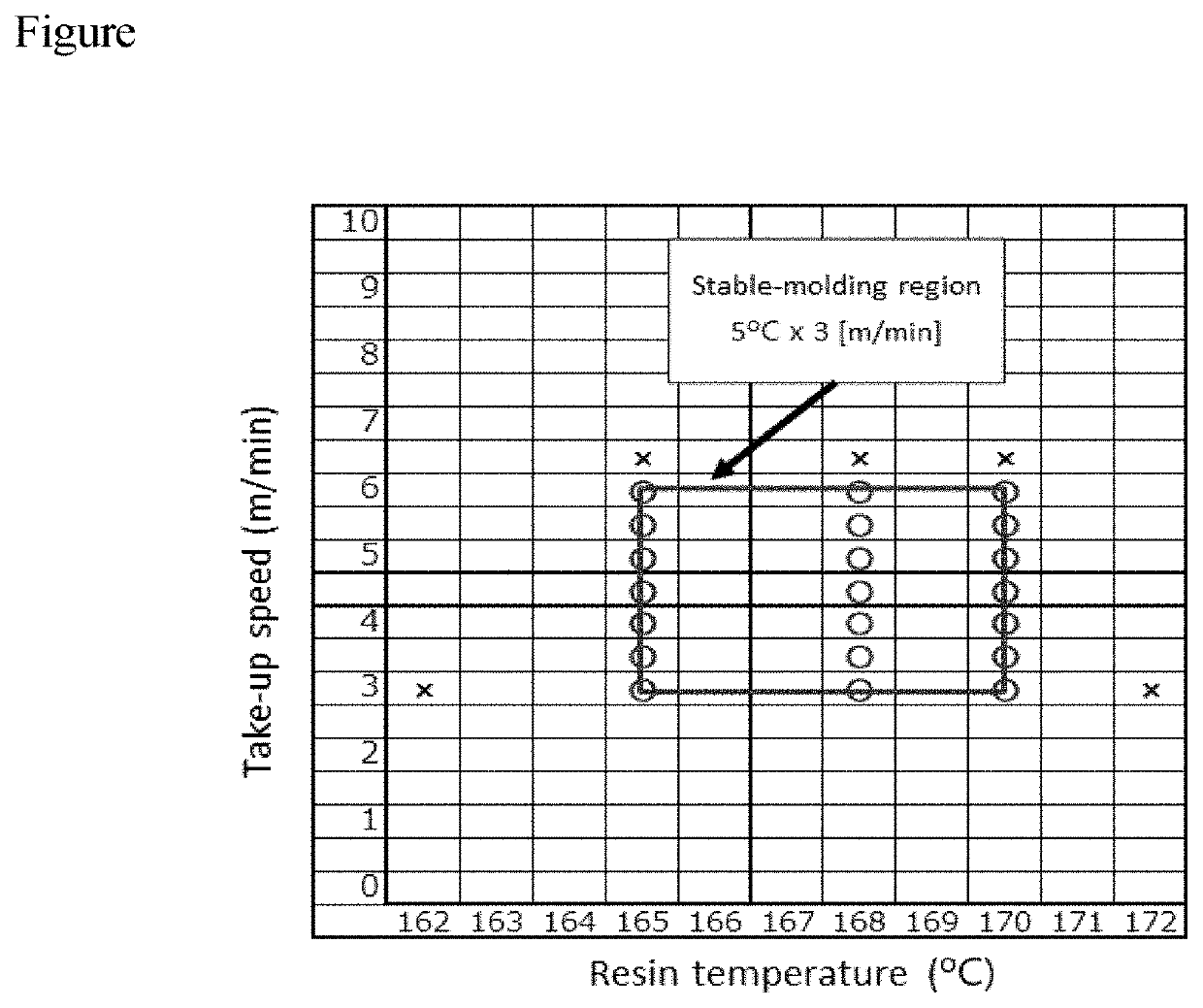Poly(3-hydroxyalkanoate) resin composition
a technology of poly(3-hydroxyalkanoate) and resin, which is applied in the field of poly (3hydroxyalkanoate) resin composition, can solve the problems of poor melt molding processability, insufficient physical properties of molded articles obtained from p3ha, and large influence of plastic waste on the global environment, so as to improve moldability, reduce production costs, and improve moldability
- Summary
- Abstract
- Description
- Claims
- Application Information
AI Technical Summary
Benefits of technology
Problems solved by technology
Method used
Image
Examples
example 1
[0127](Method for Producing Resin Composition) P3HA (A-1), an organic peroxide (B-1) and an ester compound (C-1) were dry-blended at the blending ratio shown in Table 1, the mixture was melted and kneaded at a set temperature of 120 to 160° C. and a screw rotational speed of 100 rpm in a co-directional meshing-type twin-screw extruder EM 26ss manufactured by Toshiba Machine Co., Ltd.), and the strand was cut to obtain a resin composition. Table 1 shows the resin temperatures measured with a die thermometer. Further, in Table 1, the time until the resin composition is discharged from the die after each material is introduced into the extruder is shown as the retention time.
[0128]Table 1 shows the melt viscosity (η), the drawdown time (DT), and the ratio DT / η of the obtained resin composition.
[0129](Formation of Film)
[0130]Using the obtained resin composition, an inflation film was formed by the method described above in the section “Stable-molding region”, and the stable-molding regi...
examples 2 to 4
[0131]Except that the blending amount of the ester compound or the type of the ester compound was changed as shown in Table 1, the same procedure as in Example 1 was carried out to produce a resin composition, and the melt viscosity (η), the drawdown time (DT), the ratio DT / η, the resin temperature and the retention time were evaluated. Further, an inflation film was in the same manner as in Example 1, and evaluated for the stable-molding region, bleeding of the ester compound bleeding and extreme gelation. The evaluation results are shown in Table 1.
examples 5 to 9
[0133]Except that the type or the blending amount of the organic peroxide was changed as shown in Table 2, the same procedure as in Example 1 was carried out to produce a resin composition, and the melt viscosity (η), the drawdown time (DT), the ratio DT / η, the resin temperature and the retention time were evaluated. Further, an inflation film was in the same manner as in Example 1, and evaluated for the stable-molding region, bleeding of the ester compound bleeding and extreme gelation. The evaluation results are shown in Table 2.
PUM
| Property | Measurement | Unit |
|---|---|---|
| temperature | aaaaa | aaaaa |
| volume flow rate | aaaaa | aaaaa |
| melt viscosity | aaaaa | aaaaa |
Abstract
Description
Claims
Application Information
 Login to View More
Login to View More - R&D
- Intellectual Property
- Life Sciences
- Materials
- Tech Scout
- Unparalleled Data Quality
- Higher Quality Content
- 60% Fewer Hallucinations
Browse by: Latest US Patents, China's latest patents, Technical Efficacy Thesaurus, Application Domain, Technology Topic, Popular Technical Reports.
© 2025 PatSnap. All rights reserved.Legal|Privacy policy|Modern Slavery Act Transparency Statement|Sitemap|About US| Contact US: help@patsnap.com

